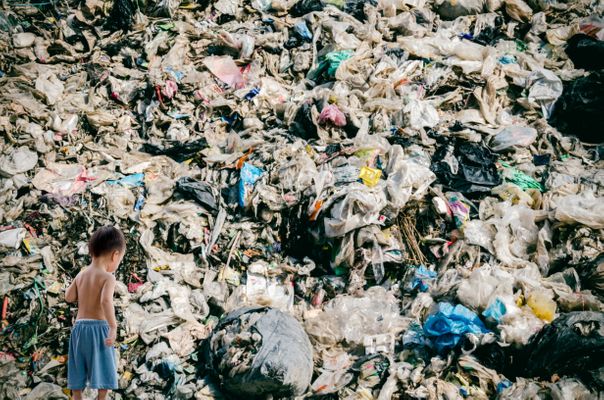7.2.1
Challenges
Deforestation & Fairtrade
Deforestation & Fairtrade
Deforestation is the removal of trees and forests. This means that animals lose their habitats and can contribute to climate change. You need to consider the impact on the environment when designing your product.


Mining
Mining
- Raw materials used to make materials for products can have a huge impact on the environment.
- Mining for metals can contaminate the soil and cause erosion of the soil or even sinkholes.


Farming
Farming
- Farming such as those used in biofuels can impact on our health and with animals due to pesticides being used which can contaminate the land and cause death of wildlife.


Oil leaks
Oil leaks
- Oil is drilled from the seabed, this can have huge impact if there is an oil leak or an oil spill where many animals are affected as it is very difficult to control and clean up.


Fairtrade
Fairtrade
- Fairtrade helps people in developing countries by ensuring they get a fair price for the products they produce or grow.
- An agreed minimum rate is paid no matter what happens to prices changing around the world.
- The movement also supports the community having improved healthcare and education to benefit the local town and villages.
CO2 Levels
CO2 Levels
The design and manufacture of products has an impact on the planet's resources but also the environment.


CO2 levels
CO2 levels
- The design and manufacture of products has an impact on the planet's resources but also the environment.
- When designing a product you must consider the impact of the materials and processes used, this can be measured by calculating the carbon footprint.


Carbon footprint
Carbon footprint
- Calculating the carbon footprint is working out how much carbon dioxide (CO2) is produced from:
- Collecting the materials.
- Manufacturing the materials.
- Manufacturing the product.
- Transporting the product.
- Using the product (product lifespan).
- End of life (disposal of the product).


Air and water pollution
Air and water pollution
- Air pollution has been linked to severe respiratory illnesses and can lead to asthma and lung cancer.
- The impact of plastics in our oceans has been heavily documented on television over the past few years, which has shown how plastic is affecting marine life and starting to appear in the food chain.


Impact on the planet
Impact on the planet
- Designers need to ensure they design to reduce the impact on the planet, from the resources we use, to the pollution it generates.
1Core Technical Principles
1.1New & Emerging Technologies
1.2Energy Generation & Storage
1.3Developments in New Materials
1.4Systems Approach to Designing
1.5Mechanical Devices
1.6Materials Categories
2Paper & Board: Specialist Technical Principles
2.1Selection of Materials
2.2Paper & Board: Forces & Stresses
2.3Paper & Board: Ecological & Social Footprint
2.4Paper & Board: Sources & Origins
2.5Paper & Board: Using Materials
2.6Paper & Board: Stock Forms, Types & Sizes
2.7Paper & Board: Scales of Production
2.8Paper & Board: Specialist Techniques & Processes
2.9Paper & Board: Surface Treatments & Finishes
3Timber: Specialist Technical Principles
3.1Timber: Selection of Materials
3.2Timber: Forces & Stresses
3.3Timber: Ecological & Social Footprint
3.4Timber: Sources & Origins
3.5Timber: Using Materials
3.6Timber: Stock Forms, Types & Sizes
3.7Timber: Scales of Production
3.8Timber: Specialist Techniques & Processes
3.9Timber: Surface Treatments & Finishes
4Metal: Specialist Technical Principles
4.1Metals: Selection of Materials
4.2Metals: Forces & Stresses
4.3Metals: Ecological & Social Footprint
4.4Metals: Sources & Origins
4.5Metals: Alloy-Based Materials
4.6Metals: Using Materials
4.7Metals: Scales of Production
4.8Metals: Specialist Techniques & Processes
4.9Metals: Quality Control
4.10Metals: Surface Treatments & Finishes
5Polymers: Specialist Technical Principles
5.1Polymers
5.2Polymer Categories
5.3Polymer Forms
5.4Polymer Production, Techniques & Quality Control
6Textiles: Specialist Technical Principles
6.1Textile Materials
6.2Selection of Materials
6.3Forces & Stresses
7Designing & Making Principles
7.1Investigation & Data
7.2Environmental, Social & Economic Challenges
7.3The Work of Others
7.4Design Strategies
7.5Communication of Design Ideas
7.6Prototype Development
7.7Selection of Materials
7.8Tolerances
7.9Material Management
7.10Specialist Equipment
7.11Specialist Techniques & Processes
Jump to other topics
1Core Technical Principles
1.1New & Emerging Technologies
1.2Energy Generation & Storage
1.3Developments in New Materials
1.4Systems Approach to Designing
1.5Mechanical Devices
1.6Materials Categories
2Paper & Board: Specialist Technical Principles
2.1Selection of Materials
2.2Paper & Board: Forces & Stresses
2.3Paper & Board: Ecological & Social Footprint
2.4Paper & Board: Sources & Origins
2.5Paper & Board: Using Materials
2.6Paper & Board: Stock Forms, Types & Sizes
2.7Paper & Board: Scales of Production
2.8Paper & Board: Specialist Techniques & Processes
2.9Paper & Board: Surface Treatments & Finishes
3Timber: Specialist Technical Principles
3.1Timber: Selection of Materials
3.2Timber: Forces & Stresses
3.3Timber: Ecological & Social Footprint
3.4Timber: Sources & Origins
3.5Timber: Using Materials
3.6Timber: Stock Forms, Types & Sizes
3.7Timber: Scales of Production
3.8Timber: Specialist Techniques & Processes
3.9Timber: Surface Treatments & Finishes
4Metal: Specialist Technical Principles
4.1Metals: Selection of Materials
4.2Metals: Forces & Stresses
4.3Metals: Ecological & Social Footprint
4.4Metals: Sources & Origins
4.5Metals: Alloy-Based Materials
4.6Metals: Using Materials
4.7Metals: Scales of Production
4.8Metals: Specialist Techniques & Processes
4.9Metals: Quality Control
4.10Metals: Surface Treatments & Finishes
5Polymers: Specialist Technical Principles
5.1Polymers
5.2Polymer Categories
5.3Polymer Forms
5.4Polymer Production, Techniques & Quality Control
6Textiles: Specialist Technical Principles
6.1Textile Materials
6.2Selection of Materials
6.3Forces & Stresses
7Designing & Making Principles
7.1Investigation & Data
7.2Environmental, Social & Economic Challenges
7.3The Work of Others
7.4Design Strategies
7.5Communication of Design Ideas
7.6Prototype Development
7.7Selection of Materials
7.8Tolerances
7.9Material Management
7.10Specialist Equipment
7.11Specialist Techniques & Processes
Unlock your full potential with Seneca Premium
Unlimited access to 10,000+ open-ended exam questions
Mini-mock exams based on your study history
Unlock 800+ premium courses & e-books
